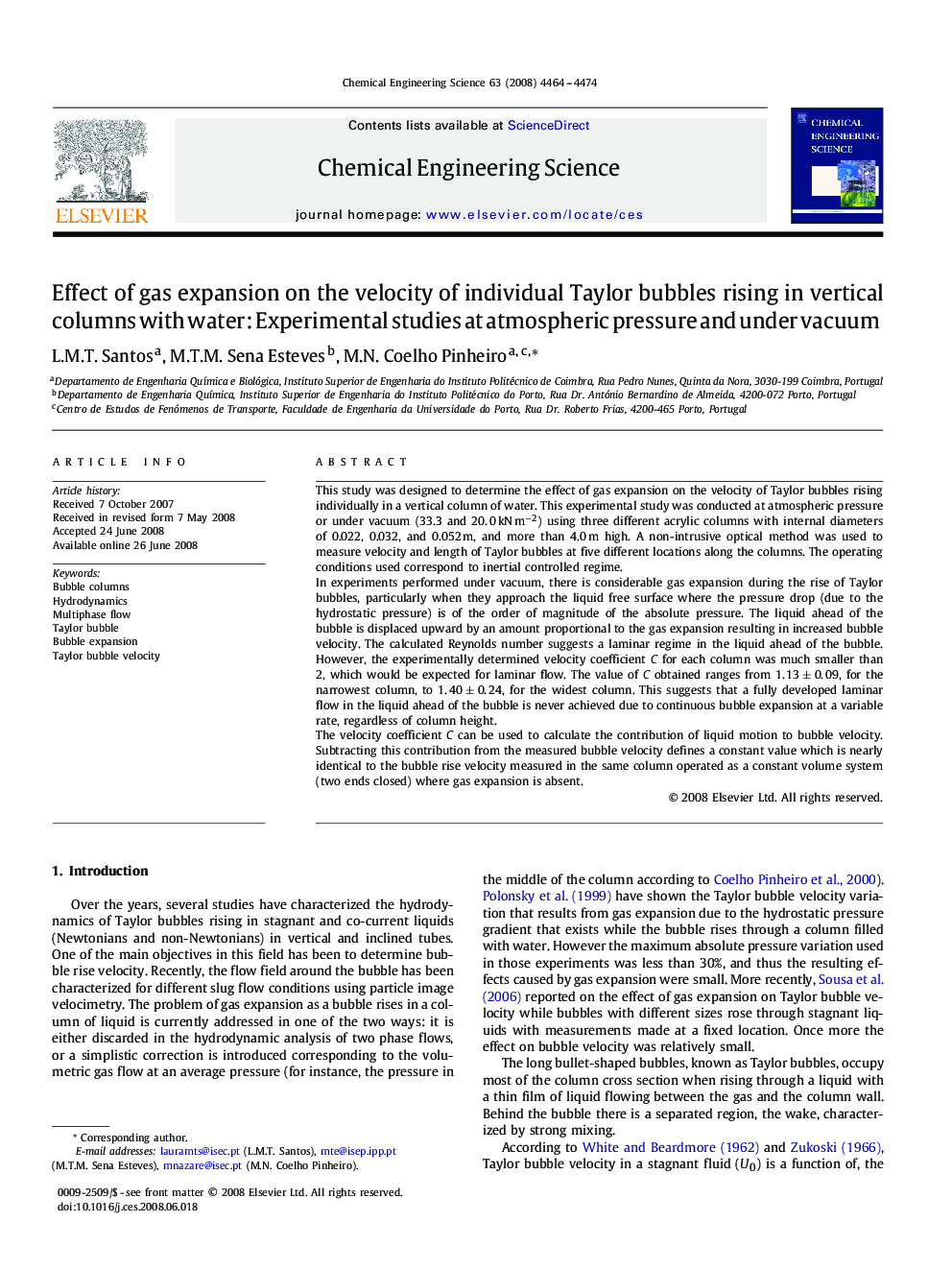| کد مقاله | کد نشریه | سال انتشار | مقاله انگلیسی | نسخه تمام متن |
|---|---|---|---|---|
| 158177 | 456998 | 2008 | 11 صفحه PDF | دانلود رایگان |

This study was designed to determine the effect of gas expansion on the velocity of Taylor bubbles rising individually in a vertical column of water. This experimental study was conducted at atmospheric pressure or under vacuum (33.3 and 20.0kNm-2) using three different acrylic columns with internal diameters of 0.022, 0.032, and 0.052 m, and more than 4.0 m high. A non-intrusive optical method was used to measure velocity and length of Taylor bubbles at five different locations along the columns. The operating conditions used correspond to inertial controlled regime.In experiments performed under vacuum, there is considerable gas expansion during the rise of Taylor bubbles, particularly when they approach the liquid free surface where the pressure drop (due to the hydrostatic pressure) is of the order of magnitude of the absolute pressure. The liquid ahead of the bubble is displaced upward by an amount proportional to the gas expansion resulting in increased bubble velocity. The calculated Reynolds number suggests a laminar regime in the liquid ahead of the bubble. However, the experimentally determined velocity coefficient C for each column was much smaller than 2, which would be expected for laminar flow. The value of C obtained ranges from 1.13±0.091.13±0.09, for the narrowest column, to 1.40±0.241.40±0.24, for the widest column. This suggests that a fully developed laminar flow in the liquid ahead of the bubble is never achieved due to continuous bubble expansion at a variable rate, regardless of column height.The velocity coefficient C can be used to calculate the contribution of liquid motion to bubble velocity. Subtracting this contribution from the measured bubble velocity defines a constant value which is nearly identical to the bubble rise velocity measured in the same column operated as a constant volume system (two ends closed) where gas expansion is absent.
Journal: Chemical Engineering Science - Volume 63, Issue 18, September 2008, Pages 4464–4474